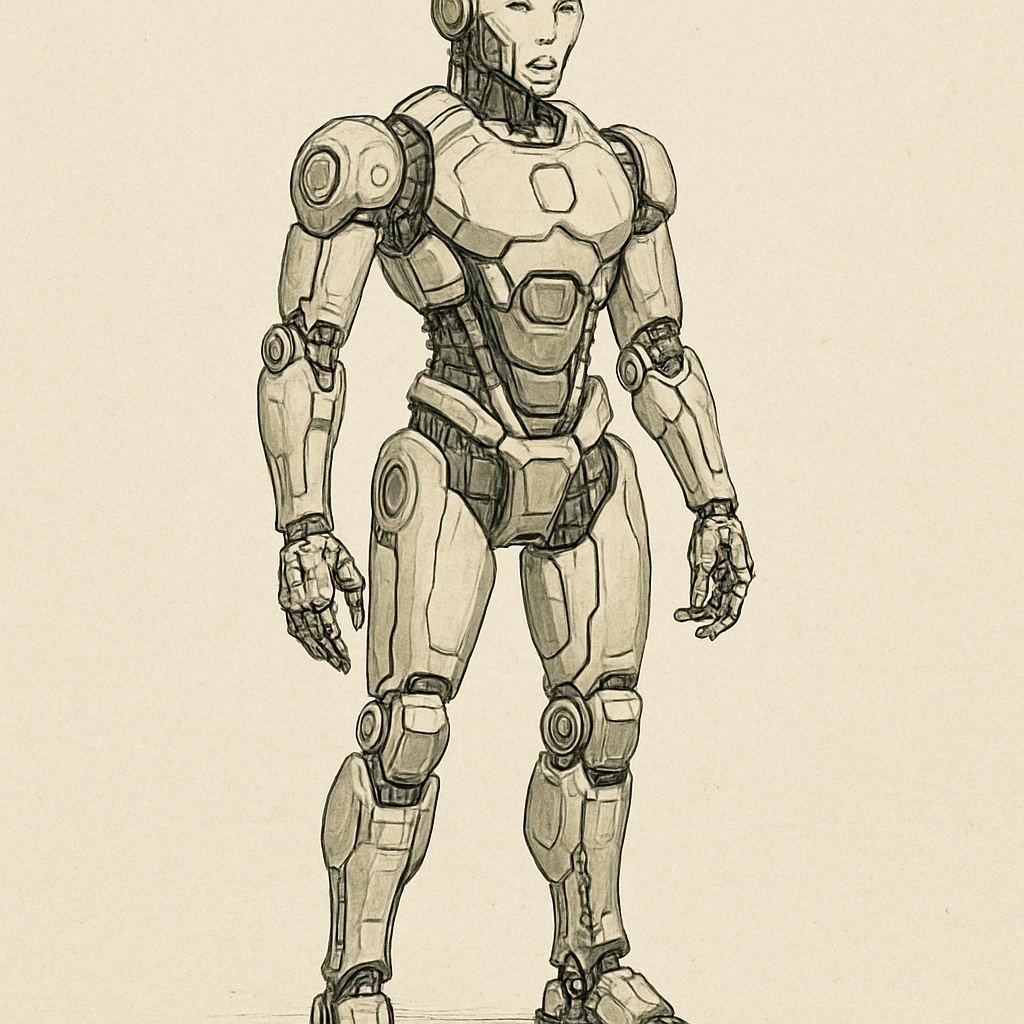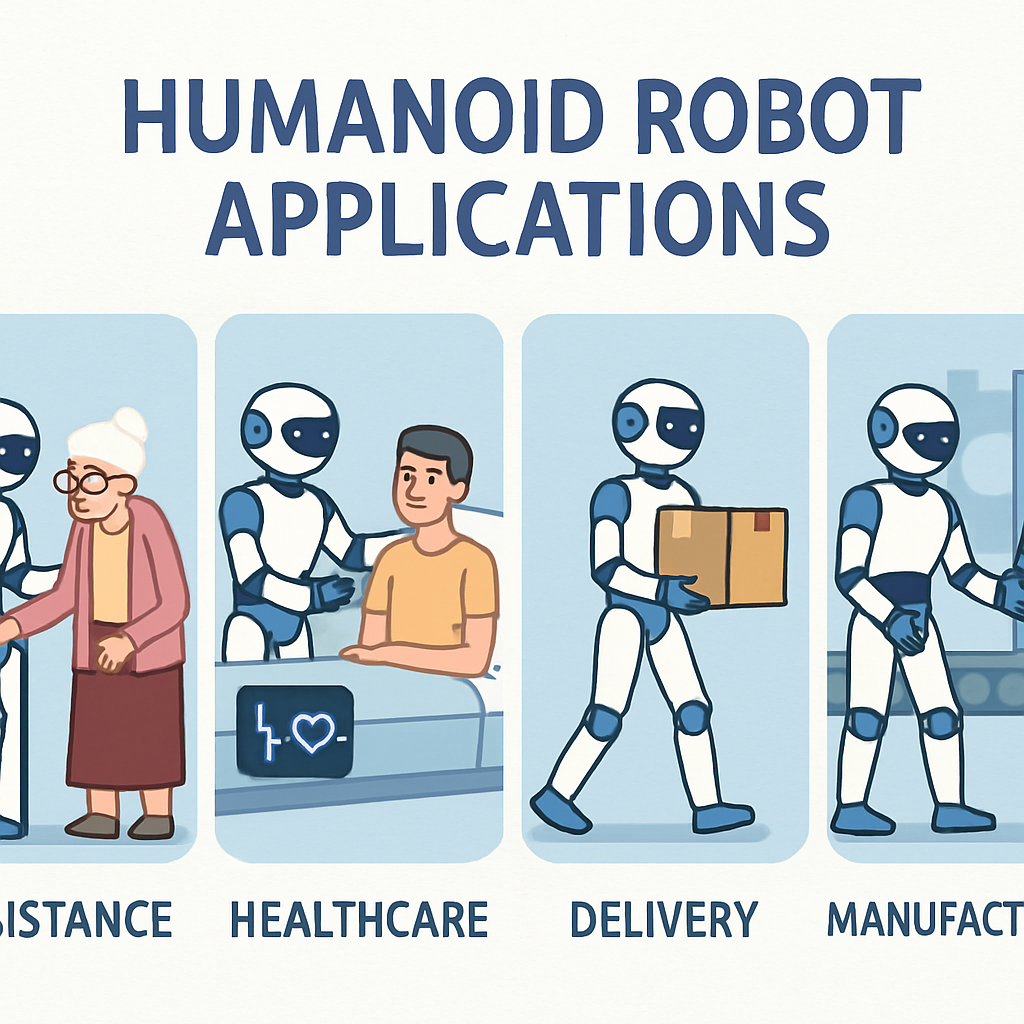The Future of Humanoid Robots in Society
The Future of Humanoid Robots in Society

Humanoid robots are machines meticulously designed to resemble the human body, offering a bridge between human and machine interaction. They typically have a head, torso, arms, and legs, enabling them to interact with the world in a human-like manner. These robots are equipped with advanced sensors and actuators, allowing them to perceive their environment and perform tasks with a high degree of precision and adaptability.
Anatomy of Humanoid Robots
Humanoid robots are characterized by their anthropomorphic form, which enables them to perform tasks traditionally carried out by humans. Their design includes a head for housing sensors and cameras, a torso for balance, and limbs for movement and manipulation. This human-like structure allows them to navigate environments designed for people, such as homes and workplaces, offering seamless integration into existing spaces.
Advanced Sensor Technologies
Equipped with state-of-the-art sensors, humanoid robots can “see,” “hear,” and “feel” their surroundings. Cameras provide visual perception, enabling object recognition and navigation, while microphones allow for audio input and interaction. Tactile sensors in their limbs provide feedback for delicate manipulations, ensuring precision in tasks like assembling components or performing surgeries.
The Role of Artificial Intelligence
Artificial Intelligence (AI) is the cornerstone of humanoid robotics, enabling these machines to process data and make intelligent decisions. AI algorithms allow robots to learn from their interactions, adapt to new environments, and even predict human behavior. This intelligent processing is essential for tasks that require a high level of autonomy, such as caregiving and customer service.
The Development and Cost of Humanoid Robots
The development of humanoid robots is a complex and costly endeavor, driven by the need for continuous innovation and refinement. Companies invest heavily in research and development to enhance robot capabilities and reduce production costs. As technology progresses, the price of humanoid robots continues to decrease, making them more accessible to a broader audience.
Research and Development Investments
The journey from concept to functional humanoid robot requires significant investment in research and development. Companies and academic institutions collaborate to push the boundaries of robotics, focusing on areas such as biomechanics, sensor fusion, and machine learning. These efforts are crucial for overcoming technical challenges and paving the way for more advanced and cost-effective robots.
Economies of Scale and Cost Reduction
As the demand for humanoid robots grows, economies of scale are expected to drive down costs. Mass production techniques and standardization of components can significantly reduce manufacturing expenses. Additionally, advancements in materials science are leading to lighter and more durable components, further reducing costs and enhancing robot performance.
Humanoid Robot Kits for Education and Hobbyists
For hobbyists and educators, humanoid robot kits offer a hands-on approach to learning about robotics. These kits typically include pre-assembled components and software, allowing users to build and program their robots. Prices vary, but they provide an affordable entry point into the world of humanoid robotics, fostering interest and innovation among the next generation of engineers and developers.
Applications of Humanoid Robots

Humanoid robots have the potential to revolutionize various industries by performing tasks that require human-like interaction and dexterity. Their versatility and adaptability make them ideal candidates for roles traditionally held by humans, from healthcare to entertainment.
Healthcare Innovations
In healthcare, humanoid robots can assist with patient care, providing support for tasks such as lifting patients or delivering medication. They can also aid in rehabilitation by guiding patients through exercises, offering a consistent and tireless presence that can improve recovery outcomes. Furthermore, robots equipped with AI can monitor vital signs and communicate with medical staff, enhancing patient care efficiency.
Transforming Education
In educational settings, humanoid robots can serve as interactive teaching aids, engaging students in subjects like science and technology. Their presence can make learning more engaging and accessible, providing personalized instruction and feedback. Robots can also assist in special education, offering tailored support for students with unique learning needs, fostering an inclusive educational environment.
Entertainment and Cultural Impact
The entertainment industry is already embracing humanoid robots, using them as performers in shows and attractions. Their ability to mimic human expressions and movements captivates audiences, creating new forms of artistic expression. Beyond performance, these robots are exploring roles in gaming and virtual reality, providing immersive experiences that blend physical and digital worlds.
The Future of Humanoid Robots
The future of humanoid robots holds exciting possibilities. As technology advances, these robots will become more capable and integrated into society. Their evolution will be shaped by technological breakthroughs, ethical considerations, and economic factors, ultimately redefining human-robot interaction.
Advancements in Technology

by julien Tromeur (https://unsplash.com/@julientromeur)
Continued advancements in AI, machine learning, and robotics will enable humanoid robots to perform increasingly complex tasks. Enhanced sensors and processors will improve their ability to perceive and interact with their environment, making them more autonomous and efficient. Innovations in energy storage and battery life will also extend their operational capabilities, allowing for longer and more intensive use.
Ethical Considerations and Societal Impact
With the rise of humanoid robots, ethical considerations must be addressed. Questions about privacy, employment, and the potential for misuse are at the forefront of the discussion. It is crucial to establish guidelines and regulations to ensure the responsible development and deployment of these technologies, protecting human rights and promoting societal well-being.
Investment Opportunities in Robotics
For investors, the growing interest in humanoid robots presents opportunities in the stock market. Companies involved in humanoid robot development, production, and application are attracting attention, and investing in these stocks could yield significant returns as the technology matures. The robotics sector is poised for growth, offering lucrative prospects for those willing to embrace technological innovation.
Everyday Integration and Lifestyle Changes
In the future, humanoid robots may become commonplace in households, assisting with chores, providing companionship, and enhancing home security. Their presence could transform our daily lives, making tasks more manageable and freeing up time for leisure and personal pursuits. As robots become more integrated into society, they will influence lifestyle changes, reshaping how we interact with technology and each other.
Challenges in Humanoid Robot Development
Despite the promising future, several challenges remain in humanoid robot development. These challenges must be addressed to ensure the successful integration of robots into society and to maximize their potential benefits.
Overcoming Technical Limitations
Developing robots that mimic human capabilities is technically challenging. Ensuring stability in bipedal locomotion, achieving dexterous manipulation, and processing complex sensory data are ongoing hurdles. Researchers are exploring innovative solutions such as soft robotics and bio-inspired designs to enhance robot performance and reliability.
Cost and Accessibility Barriers
While prices are decreasing, high-quality humanoid robots remain expensive. Reducing production costs and enhancing affordability will be key to widespread adoption. Efforts to develop cost-effective materials and streamline manufacturing processes are essential to making robots accessible to a broader audience.
Addressing Public Perception and Acceptance
Public acceptance of humanoid robots is another challenge. Concerns about job displacement, privacy, and safety must be addressed to build trust and acceptance. Educational initiatives and transparent communication can help demystify robots and highlight their potential to improve quality of life, fostering a positive perception among the public.
Conclusion
Humanoid robots are on the brink of becoming an integral part of society. Their potential applications span healthcare, education, entertainment, and beyond. As technology advances and costs decrease, these robots will become more prevalent, transforming the way we live and work. However, ethical considerations and technical challenges must be addressed to ensure a future where humanoid robots contribute positively to society. With careful planning and responsible development, the future of humanoid robots holds immense promise, offering a vision of a world where humans and robots coexist harmoniously.


